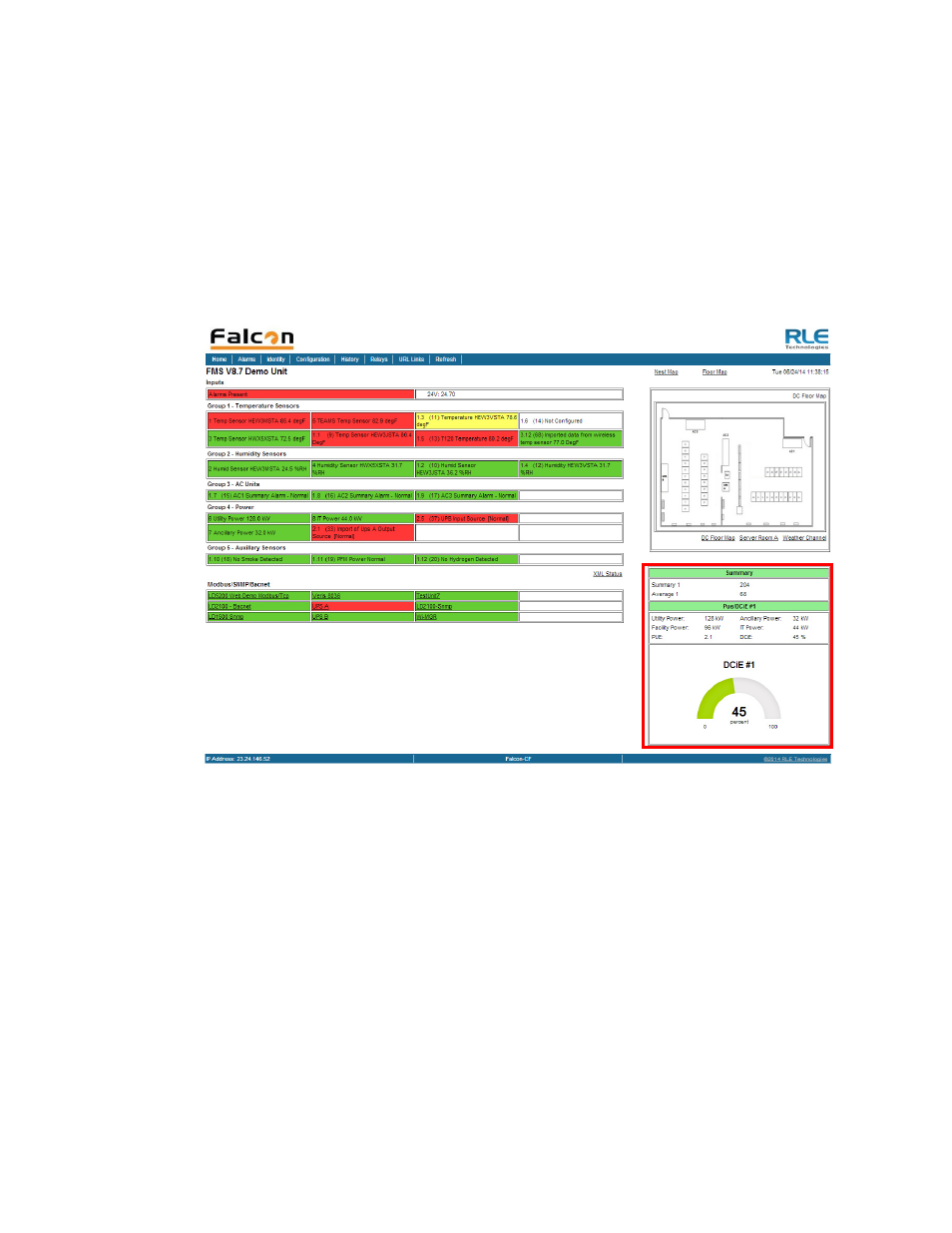26 pue/dcie/summary/average, Pue/dcie/summary/average – RLE FMS V.1.13 User Manual
Page 108

108
FMS User Guide
800.518.1519
3
Web Interface Configuration
3.4.26 PUE/DCiE/Summary/Average
PUE and DCiE calculations are valuable metrics used by data centers to track their energy
efficiency. PUE measures the efficiency of the computing equipment, while DCiE measures
the efficiency of the data center’s infrastructure. Maximizing the energy efficiency of
computing equipment and the data center infrastructure helps reduce energy costs and can
minimize data center down time.
The FMS provides a set of tools that help track real-time PUE and DCiE information, as well
as logging long-term PUE/DCiE trending information. A chart with PUE/DCiE information
can be found on the lower right side of the FMS home page.
Figure 3.43
PUE/DCiE Data on FMS Home Page
Before you can generate PUE/DCiE data through the FMS, you need some data for the FMS to
work with. Submeters need to be wired, or SNMP/Modbus communications need to be
established to gather the following kilowatt (kW) readings:
♦
Utility load - The main power feed into the building - usually obtained through a submeter.
♦
IT load - Power consumed by all computing devices - usually obtained through a submeter
or through protocol SNMP/Modbus communications.
♦
Ancillary load (optional) - The portions of the building outside the data center, including
warehouse space, offices, etc. - usually obtained through a submeter or through protocol
SNMP/Modbus communications.